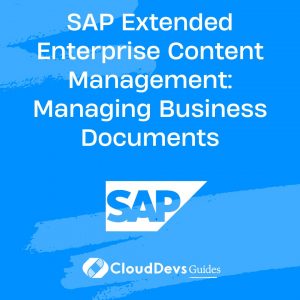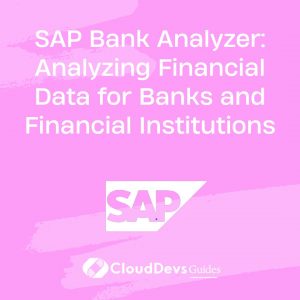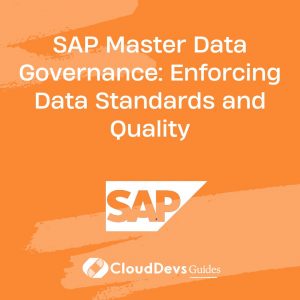SAP Analytics Cloud: Driving Data-Driven Decision Making
In today’s data-driven world, organizations of all sizes are constantly seeking ways to harness the power of data to make informed decisions. Data-driven decision-making has become a competitive advantage, allowing businesses to gain deeper insights, identify trends, and respond to market changes swiftly. To achieve this, they rely on sophisticated analytics tools, and one such tool that stands out is SAP Analytics Cloud.
1. Understanding SAP Analytics Cloud
SAP Analytics Cloud, often abbreviated as SAC, is a comprehensive cloud-based analytics solution offered by SAP. It’s designed to help businesses leverage their data effectively for decision-making, planning, and predictive analytics. SAC integrates various data sources, offers advanced analytics capabilities, and provides a collaborative environment for teams to work together seamlessly.
2. Key Features of SAP Analytics Cloud
SAP Analytics Cloud comes packed with an array of features that make it a valuable asset for organizations aiming to drive data-driven decision-making. Let’s explore some of its key features:
2.1. Data Integration:
SAC allows users to connect to a wide range of data sources, including on-premises and cloud databases, spreadsheets, and other SAP applications. This feature simplifies data access and enables users to work with a unified view of their data.
python
# Example code for connecting to a data source in SAC
from sap_sac import SAC
# Connect to the data source
sac = SAC()
sac.connect('my_data_source')
2.2. Data Modeling:
Data modeling in SAC is intuitive and user-friendly. Business users can create data models with a drag-and-drop interface, defining relationships and calculations effortlessly.
sql
-- Example SQL-like code for creating a calculated field in SAC
SELECT
sales_amount,
cost_price,
sales_amount - cost_price AS profit
FROM
sales_data;
2.3. Advanced Analytics:
SAP Analytics Cloud provides a rich set of analytical functions, including forecasting, clustering, and trend analysis. Data scientists and analysts can use these tools to uncover hidden insights within their data.
r
# Example R code for time series forecasting in SAC
library(forecast)
# Load data from SAC
data <- sac.load_data('sales_data')
# Perform time series forecasting
forecast_model <- auto.arima(data)
2.4. Visualization:
Visualization is a crucial aspect of data-driven decision-making. SAC offers a wide range of chart types and visualization options, allowing users to create interactive and insightful dashboards.
javascript
// Example JavaScript code to create a bar chart in SAC
const data = [
{ month: 'Jan', revenue: 5000 },
{ month: 'Feb', revenue: 6000 },
{ month: 'Mar', revenue: 7500 }
];
// Create a bar chart
const chart = sap.viz.ui5.Bar({
dataset: new sap.viz.ui5.data.FlattenedDataset({
dimensions: [{ name: 'month', value: '{month}' }],
measures: [{ name: 'revenue', value: '{revenue}' }],
data: { path: '/data' }
})
});
2.5. Collaboration and Sharing:
SAC enables collaboration by allowing teams to work on analytics projects together. Users can share reports, dashboards, and data models with colleagues, ensuring everyone is on the same page.
3. The Benefits of SAP Analytics Cloud
Now that we’ve explored some of the key features, it’s essential to understand how SAP Analytics Cloud benefits organizations in their pursuit of data-driven decision-making.
3.1. Real-Time Data Insights:
SAC provides real-time data connectivity, ensuring that decision-makers have access to the latest information. This empowers organizations to respond rapidly to changing market conditions.
3.2. User-Friendly Interface:
The intuitive user interface of SAP Analytics Cloud means that business users can create their reports and dashboards without needing extensive technical knowledge. This democratizes data analytics and reduces reliance on IT teams.
3.3. Cost-Efficiency:
As a cloud-based solution, SAC eliminates the need for significant upfront investments in hardware and infrastructure. It also reduces maintenance costs and allows organizations to scale their analytics capabilities as needed.
3.4. Predictive Analytics:
SAP Analytics Cloud’s advanced analytics features enable organizations to move beyond historical analysis and predict future trends and outcomes. This capability is invaluable for strategic decision-making.
3.5. Security and Compliance:
SAC ensures data security and compliance with features like role-based access control and encryption. This is critical, especially when handling sensitive business data.
4. Real-World Use Cases
To illustrate how SAP Analytics Cloud drives data-driven decision-making, let’s explore a couple of real-world use cases:
Use Case 1: Sales Performance Analysis
Imagine a retail company that wants to assess its sales performance across multiple regions. Using SAC, they can:
- Import sales data from various stores and regions.
- Create interactive dashboards that display sales trends, top-performing products, and regional comparisons.
- Use predictive analytics to forecast sales for the upcoming quarter.
- Share these dashboards with regional managers, enabling them to make data-driven decisions to improve sales in their areas.
Use Case 2: Financial Planning and Budgeting
A financial department within a corporation needs to streamline its budgeting process. With SAC, they can:
- Import historical financial data and budgets.
- Create budget models with predefined calculations and scenarios.
- Collaborate with department heads to adjust budgets in real-time.
- Visualize budget variances and financial forecasts.
- Share budget reports with executives and stakeholders, facilitating better financial decisions.
5. Implementing SAP Analytics Cloud
Implementing SAP Analytics Cloud in your organization involves several key steps:
5.1. Assessment and Planning:
Start by defining your analytics goals and identifying the data sources you need to connect to. Create a roadmap for implementation, including data modeling, dashboard design, and user training.
5.2. Data Integration:
Connect SAC to your data sources, whether they are on-premises or in the cloud. Ensure data quality and consistency during the integration process.
5.3. Data Modeling:
Design data models that align with your business requirements. Use SAC’s modeling capabilities to create calculations, hierarchies, and custom dimensions.
5.4. Dashboard Development:
Design interactive dashboards and reports that visualize your data effectively. Consider the needs of different user groups within your organization.
5.5. User Training:
Provide training to users, including business analysts and decision-makers, to ensure they can maximize the potential of SAC.
5.6. Deployment and Monitoring:
Deploy SAP Analytics Cloud in your organization, and continuously monitor its performance and usage. Gather feedback from users to make improvements.
Conclusion
In today’s competitive landscape, data-driven decision-making is no longer a luxury but a necessity. SAP Analytics Cloud empowers organizations to harness the full potential of their data, enabling them to make informed decisions, drive growth, and stay ahead of the competition.
With its powerful features, user-friendly interface, and real-time capabilities, SAP Analytics Cloud is a valuable asset for any organization looking to embrace the data-driven future. It’s time to unlock
Table of Contents









